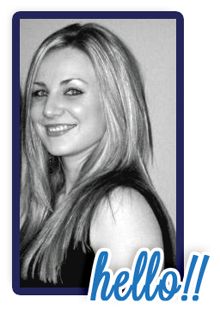Cultural diversity exists within
my school, in my neighborhood, within my workplace and even within my family.
Culture is made up of different cultures which include race, religion, political
affiliation, sexual orientation, varying abilities and even individual family
cultures.
I definitely communicate
differently with people from different groups and cultures. For example, when
working with my autistic students, part of our life skills curriculum goals is
to carry on a conversation using various strategies. We are working on using eye
contact, nodding and gesturing to show presence within a conversation, having a
“two-way conversation” involving questioning about one’s interests and what is
being said and not repeating the same ideas over and over again. When talking
with these students I model this behavior and give elaborate praise when these
strategies are put to use. During everyday conversations with friends and
family I am more natural and am not taking on the role of a teacher. When
working with young children I speak to their level and tend to gesture a lot
especially when teaching French to learners as a second language. With that
said, being bilingual, I speak French in my work place as I teach in a French
community and Francophone school but have friends and family who only speak
English. While speaking with close friends who are bilingual, I tend to switch
back and forth between both languages, however, in my role as a teacher I only
speak French to my Principal and with my students because it is a cultural
expectation. When participating in professional development opportunities and
collaborating with other professionals, I use language that is appropriate for
the content and context while in other situations I am not concerned with
formality. I love talking to my boyfriend and we share a lot about our individual
professional lives but because he is not in the same field I feel as though he
does not understand in the way that my friends who are teachers do. I tend to
talk differently and in more detail with them than I would with him.
This week we learned about
cultural myopia and the platinum rule. Cultural myopia is when "Individuals
who fail to consider other cultural perspectives are said to suffer from
cultural myopia, a form of nearsightedness grounded in the belief that one's
own culture is appropriate and relevant in all situations and to all
people" (O'Hair & Wiemann, p. 45, 2012). The platinum rule asks us to
treat people the way that they wish to be treated in comparison to the golden
rule in which we are asked to treat those the way that we want to be treated. I
can definitely use this information in order to communicate more effectively
with the people and groups discussed above. While teaching French as a second
language it is important to remember that the language is new to the students.
I need to slow down while speaking. In this week’s part one of our discussion
forum I shared an experience I had with a family from Afghanistan. As part of
the family’s culture I was only supposed to address the father during meetings,
conferences and interviews. I explained that I found these wishes degrading,
sexist, discriminatory and quite frankly infuriating. Although I adhered to the
family’s wishes at once, I struggled with these guidelines internally. It took
a lot of reflection and time for me to finally say and realize that I was using
my own personal cultural beliefs as a reference for what was right to judge
someone else’s culture as wrong. This is both an example of cultural myopia and
the platinum rule.
References:
O'Hair, D., & Wiemann, M. (2012). Real communication: An
introduction. New York: Bedford/St. Martin's.






7 comments:
Hello Rhiannon, I enjoy reading your post; I liked the example you gave about the Afghanistan family and their culture/beliefs and how sometimes we judge others when we see their culture trough our own beliefs. Trust met that I would be feeling the same thing as you, but this is part of their culture and we need to understand that they might see our culture and beliefs as unrealistic, unorganized and more becasue they are seeing it throught their culture's eyes.
Hello Rhiannon, I enjoy reading your post; I liked the example you gave about the Afghanistan family and their culture/beliefs and how sometimes we judge others when we see their culture through our own beliefs. Trust me that I would be feeling the same thing as you, but this is part of their culture and we need to understand that they might see our culture and beliefs as unrealistic, unorganized and more because they are seeing it through their culture's eyes.
Rhiannon,
I love how you mentioned that you are using a life skills curriculum that teaches skills of good two way communication. I would love to be able to implement something like this with my students. Would you mind sharing what curriculum you are using? I have been looking for something for awhile and have not been able to find something that will work with my needs.
I also agree with what you are saying about there being times when you need to slow down, give more or less detail, or even change languages depending on the situation. This helps to recognize each person as an individual and what the expectations or outcome of a conversation might be. Like you said, you may be more comfortable asking for advice from someone who you know is good in a certain field more than you would ask it of others. This is important to recognize the strengths and skills of other as we are communicating with them. I have realized the same is true with parents, they don't always know everything about their child or have all the answers and it takes a good partnership to provide the best care and services for the children.
Hi Rhiannon
Great Post. Like you I too realized that I was using my personal cultural beliefs as a reference for what was right for others. Now I understand this is not fair to others. I am more open minded to learning what others perspectives are. That what is right to me maybe look at as being wrong to others. I must be willing to go beyond my way of thinking in order to reach a mutual understanding with others.
Rhiannon,
I love your post. Your example hits home in so many ways. I agree with you when you said you have to slow down when speaking and introducing a new language. I truly feel that when we do slow down we will speak clearly and we find words that will not offend others.
Hi Rhiannon,
I am glad you mention eye contact, and head nodding. I believe most individuals do not realize that nonverbal communication is just as important as verbal communication. For instance if a teacher is explaining information that will be on a quiz, she may ask the students questions relating to the quiz to see if they were listening or understand what was communicated. Likewise, when a speaker is speaking to a large group of people and communicating or sharing important information the speaker may make nonverbal gestures such as eye contact with some of the people in the audience, or the speaker may notice people nodding their heads showing they are listening and understand what is being said. On the other hand if some in the audience do not understand they may make facial expressions that show the information is not clearly communicated.
Very Nice Post Rhiannon!
Hi Rhiannon,
I love your analysis of how you communicate with others. It's crazy to think how different we communicate from person to person. I too feel as if I talk differently to my boyfriend about issues or troubles I am having at work. Many times he doesn't fully understand what I am trying to say or understand why I handled a situation the way I did. However, on the flip side when i am talking to my colleagues or other professionals in the field they are very understanding and our communication is much different. You did a great job! I truly enjoyed reading your blog.
Post a Comment